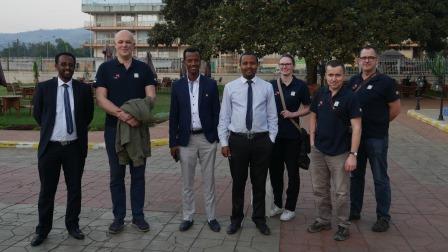
Mission in Sodo, Ethiopia.
Team Estonia, Jan 17-31, 2016
Juri Teras
Toomas Ümarik, surgeon
Kristjan Kalling, anaesthetist
Sandra Teppo, surgical resident
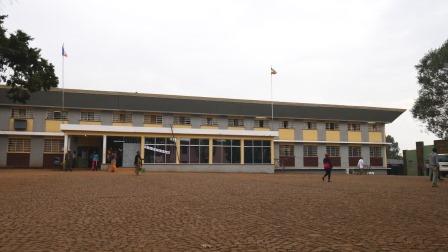
It was deep night when we arrived in Addis Ababa. Almost 2 hours in the passport control and we found ourselves in the warm dark night. Of course there was no hotel shuttle waiting and as a must in Africa, the hotel was also overbooked. So whoever follows us to Ethiopia- be aware that Addis has the most expensive and most certainly most unreliable hotel service I have seen in Africa.
But Fish, a surgeon in Sodo Otona hospital and our host for two weeks in Ethiopia, managed to find us the next morning somewhere in Addis and without further delay off we drove towards Sodo.
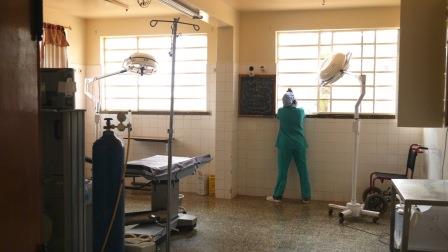
Wolaita, (the region with Sodo as the centre), is (according to wiki):
Wolayta is one of the 13 Zonal Administrations of the Southern Region In Ethiopia, Located 300 kilometers south of Addis Ababa.
The vegetation and very comfortable climate of the large part of the region are conditioned by an overall elevation of between 1,500 and 1,800 meters above the sea level. There are, however, five mountains higher than 2,000 meters, with Mount Damota – at 3,000 meters – at the centre.
Through mildly undulating hills, one can travel through the whole area without difficulty, there are no Large forests except in the Soddo Zuriya, and Omo river basin, which is well below 1500 meters and a malaria zone.
The climate is stable, with temperature variation between 24 and 30 °C during the day and 16 to 20 °C at night, all year round. The dry, temperate heat makes the climate simply “delicious”.
The year is divided into two seasons: the wet season (balguwa) from June to October, and the dry season (boniya) from October to June, broken in February by a short period of so-called “little rains” (baddessa). The average rainfall for the entire region is 1350 millimeters per year.
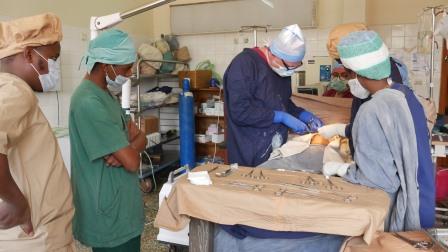
We visited the region in January, so climate was quite cool and dry, one could say that nights were even chilly. And the mosquitoes were not that aggressive, we took our malaria medication very obediently though.
Sodo Otona hospital is part of Wolaita Sodo University that has a Medial faculty. The hospital, built in 1975 by Christian missionaries, has not seen any reconstruction or maintenance during past decades and is in quite worn-out state. Two operating theatres facing the main entrance of the hospital are spacy and could accommodate also third table if needed would be, we didn´t have that need though during our 2 week mission.
It was a scouting mission to Sodo, there hadn´t been a mission to the Otona hospital before, and therefore we didn´t know what to expect, neither knew the local staff what to fear. 7 operating days and 55 operations was our limit this time, hernias, inguinal, scrotal, umbilical, epigastric, mostly done under local, mesh repair using mosquito mesh. We prepared our meshes at home, sterilized them and took along, left some 80 pieces in the hospital after completing the work, together with our sterile gloves and sutures. As usual in Africa, patients have to buy everything beforehand for the operation – gloves, sutures and other materials, drugs and even saline. So, whenever we needed another infusion-bag a prescription was written and some relative ran off to hospital pharmacy. God knows if our donations will also end up there or not. Surgical instruments were divided into major and minor sets, both more or less usable, only scissors being from the not-cutting type. I hope our advice to sharpen them will be taken seriously, we did find such a device in Sodo Christian Hospital.
Postop care is non-existent, at least for our European standards. No possibilities to monitor or ventilate the patients, so actually complex abdominal wall reconstructions had to be turned down. Most of our cases left next morning though, after being watched overnight by their relatives as it is usual also in other parts of Africa.
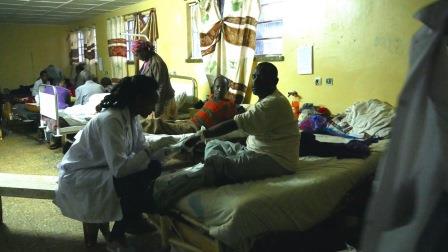
There is a CT scan in the hospital, but still packed somewhere in a storeroom and waiting for something now almost for a year, but USG an X-ray were there and functioning.
And two functioning ventilators in OR, one coagulator with one reusable cord, so if possible take a cord or two along.
There are 3 surgeons, Fish being one of them, working in the public hospitals in Wolaita, a region of some 3 MM inhabitants. On our first operating day we had the privilege of having them all in our operating theatre, but later they disappeared. No luck of having them operated and us teach, we did offer that though. 2 surgical residents were around, we had some luck in coaching them through basics of hygiene and sterility but surgical residency is a new thing for Otona and I hope they will get some proper training later. Scrub nurses on contrary where most efficient and well trained, but needed constant reminding of need of their presence in the OR and using daylight efficiently.
Actually, the only one being always punctual was our driver, waiting every morning exactly at 8am in the hotel. Anyway, we got the work done and waiting after OR or anaesthesia people is familiar for us also in Europe.
We were lucky to have anaesthetist with us, so spinal or general for 3 kids (all round 1 yoa) was no problem. Ketamine and halothane were the only drugs available, but this is typical for Africa. We managed well though. Local, lidocaine at least, was available and we used it generously, taught also locals to do local anaesthesia.
Although in Sodo there is another hospital, the private Sodo Christian Hospital, collaboration between these two institutions has been so far almost non-existent, but some warming of relations happened during our stay. We had even a joint dinner together with surgeons from the two hospitals organized by the University management in our hotel, of course when checking out some days later the bill was added to our account. To be honest, we refused that.
There are some possibilities for accommodation in Sodo, we had the best and newest, Abebe Zeleke Hotel, quite fashionable and cosy, worth recommending to others.
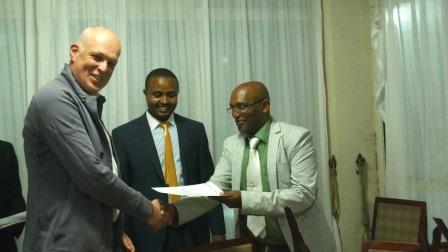
So in conclusion:
-Going for a mission to Sodo, Ethiopia is feasible.
-Take everything with you, try to “sneak” through the customs with your i/v cannulas (you´ll need a lot), sutures, gloves and meshes. Don´t believe any promises of help, you are alone facing the officials.
-Prepare you mission well ahead, convince Sodo hospital to start advertising early for the campaign.
-Wolaita is beautiful, but try to visit also Arba Minch, we stayed at Paradise Lodge and loved every minute of it. Avoid Addis, it is expensive and definitely not the prettiest of African city, but visiting Lucy in National Museum is worth the effort.
Juri Teras

